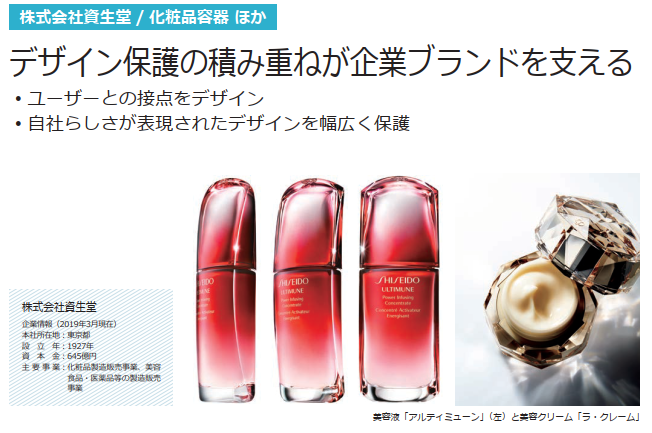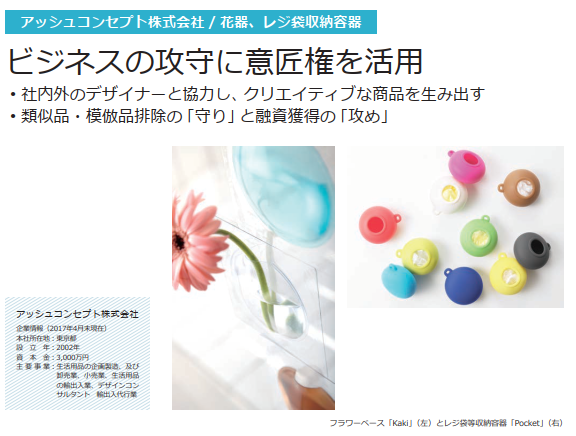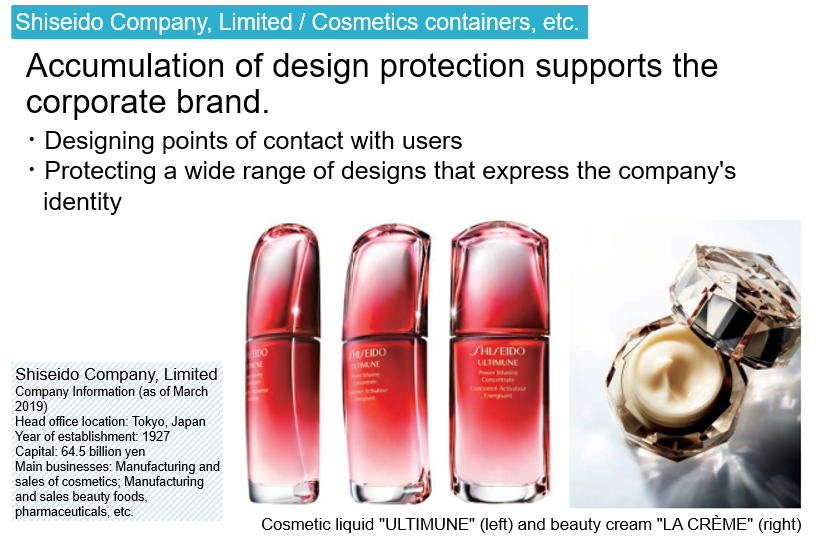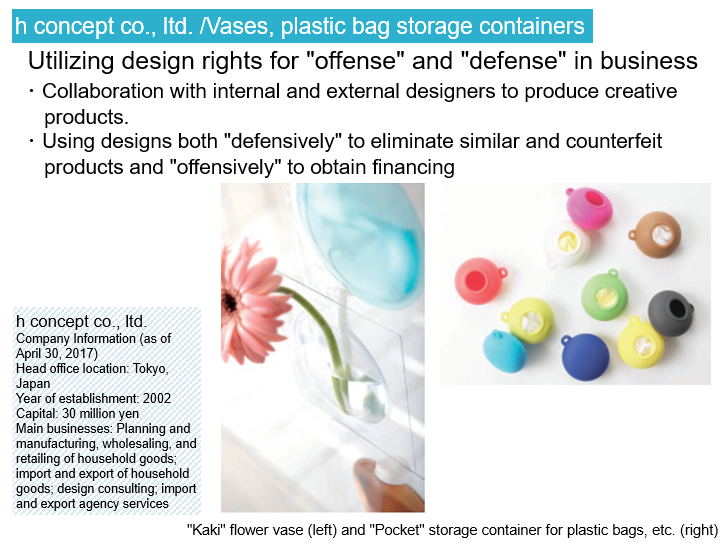目次
10月号【法務】ニュースレター

特許庁:【商標】拒絶されない商標出願をするためのポイント
特許庁は、初めて商標出願するユーザーに向けて、拒絶されない商標出願をするためのポイントを分かりやすく解説したガイドを公表した。本ガイドでは、出願から登録までを5つのステップに分けて記載、ステップごとに、よくある拒絶理由(商標を登録できない理由)と、それを回避するためのポイントを紹介している。
1.商標登録のStep は5つ!
Step 1
ロゴマークやネーミング(商標)の決定
★よくある拒絶理由★
「商標に識別力がない!」(商標法第3条第1項各号)
識別力とは、あるロゴマークやネーミング(商標)について、自分の商品・サービスが、他人の商品・サービスと区別されるように認識させる力のことをいう。識別力の有無は、使用する商品・サービスとの関係で判断されるところ、例えば、指定商品を果物として、商標「BANANA」では識別力がないと判断される。
☆ポイント☆
商品やサービスの特徴などを商標に含める場合は、オリジナリティあふれる商標(識別力のある商標)にするとよい。
Step 2
商標を使う商品・サービスの指定
★よくある拒絶理由★
「商品・サービスの記載に問題がある!」(商標法第6条第1項・第2項)
「商品・サービスの記載が明確でない」は、最も多い拒絶の理由である。商品・サービスは明確に、また正しいカテゴリ(区分)で記載する必要がある。
☆ポイント☆
願書に記載する商品・サービスの表示は特許情報プラットフォーム J-PlatPat (https://www.j-platpat.inpit.go.jp/)に掲載されているものから選ぶとよい。
Step 3
似たような登録商標がないか調査
★よくある拒絶理由★
「類似する先行登録商標あり!」(商標法第4条第1項第11号)
商標が似ていて、かつ商品・サービスが似ている場合は拒絶理由通知が発行される。
☆ポイント☆
出願前にJ-PlatPatで、似たような登録商標がないかを調査するとよい。
Step 4
出願書類の作成と出願
★よくある拒絶理由★
「広い範囲の商品やサービスの指定」(商標法第3条第1項柱書)
登録することができる商標は、実際に扱うか、扱う予定のある商品・サービスに限定されている。商標の審査では、出願する人が①1つの区分内で広い範囲の商品・サービスを指定しているとき、又は②第35類の小売サービスを複数指定しているときは拒絶理由を通知し、本当に商標を扱う予定があるかどうか確認することになっている。
☆ポイント☆
広い範囲の商品・サービスを指定している場合、商標の使用を開始する意思を示す書面など願書に加えて提出する書類を準備しておくとよい。
Step 5
出願後の流れ
★ご注意ください★
商標権の権利期間は10年ごとに更新できる。10年後に更新する可能性がある場合は、更新料の納付期限を忘れないよう注意する必要がある。
☆ポイント☆
更新管理に不安がある場合は特許庁の通知サービスあるいは弁理士事務所に管理を依頼するとよい。
まとめ
こんなときは知財の専門家、弁理士にご相談ください。
・自分が扱う商品・サービスに合う表示がJ-PlatPatで見つからない場合
・図やロゴマーク入りの商標で、J-PlatPatでの先行商標の検索が難しい場合
・商標が似ているかどうか迷う場合
・商標が似ていて、商品・サービスも似ている登録商標を見つけた場合
・広範囲の指定商品役務の指定に該当するか判断が難しい場合
・海外でのビジネスを予定している場合
そのほかにも注意すべき点があります、不安な点がある場合は、知財の専門家、弁理士に相談することをおすすめします。
出典:「拒絶されない商標出願を解説!「商標出願ってどうやるの?」第4版」(特許庁) URL: https://www.jpo.go.jp/resources/report/sonota-info/document/panhu/shutugan_shien.pdf (2024年9月13日 一部当所にて要約して利用) |
財務省「令和6年上半期の税関における知的財産侵害物品の差止状況」を発表
財務省は、2024年9月6日、令和6年上半期の全国の税関における偽ブランド品などの知的財産侵害物品の差止状況をウェブサイト上で発表した。
全体では、令和6年上半期の輸入差止件数は18,153件(前年同期比16.2%増加)で、過去最多を更新した。この背景には、2022年10月の改正関税法の施行により、海外事業者から発送される模倣品は個人で使用する場合でも取り締まりの対象となったことなどがある。また、輸入差止点数は729,549点(前年同期比5.6%増加)で、2年連続で60万点を超えている。
■仕出国(地域)別輸入差止実績
件数・点数ともに中国の構成比が80%を超えているほか、件数では、ベトナムの構成比が中国に次いで引き続き高くなっており、マレーシアの構成比が増加した。
■知的財産別輸入実績
輸入差止件数は、偽ブランド品などの商標権侵害物品が17,334件(前年同期比15.4%増)で、引き続き全体の大半を占め、次いで偽キャラクターグッズなどの著作権侵害物品が685件(前年同期比82.2%増)であった。
輸入差止点数は、商標権侵害物品が258,527点(前年同期比4.3%減)で、次いで特許権侵害物品が230,561点(前年同期比2,681.9%増)、著作権侵害物品が226,342点(前年同期比447.0%増)であった。
■品目別輸入差止実績
輸入差止件数は、衣類が6,630件で最多、次いで財布やハンドバッグなどのバッグ類が4,166件、靴類が2,302件、身辺細貨類(注)が1,290件であった。
輸入差止点数は、煙草及び喫煙用具が176,825点で最多、次いで衣類が43,594点、医薬品が36,458点、紙製品が32,637点であった。使用又は摂取することにより、健康や安全を脅かす危険性のある物品の輸入差止めが継続している。
(注)「身辺細貨類」とは、小型の身辺用装飾品(例えば、指輪、ブローチ、イヤリング、ペンダント、ネクタイピンなど)や、通常ポケット若しくはハンドバッグに入れて携帯し又は身に着けて使用する身辺用品(例えば、シガーケース、錠剤入れなど)をいう。
<参考URL>
財務省HP
https://www.mof.go.jp/policy/customs_tariff/trade/safe_society/chiteki/cy2024_1/index.html
https://www.mof.go.jp/policy/customs_tariff/trade/safe_society/chiteki/cy2024_1/index.html
「事例から学ぶ 意匠制度活⽤ガイド」の発行
2024年9⽉に特許庁から「事例から学ぶ 意匠制度活⽤ガイド」最新第6版が発⾏された。当該ガイドでは、デザインを保護する意匠制度の活⽤⽅法について、具体的な事例を挙げて紹介している。
本ガイドによると、本ガイドの事例紹介の切り⼝は「意匠権に期待される効果」である。意匠権に期待される効果としては、他者の模倣を防ぐ効果、模倣品を排除する効果等があるが、⼤企業、中⼩企業、デザイナー、⼤学・研究機関など様々な⽴場において、意匠権の多様な効果に期待して意匠制度の活用を試みられている。掲載事例を参考に、新たなデザイン、ビジネス、イノベーションに挑戦する際のヒントとすることができる。
以下に本ガイドの一部を紹介する。
出典:「事例から学ぶ 意匠制度活⽤ガイド」(特許庁) URL: https://www.jpo.go.jp/system/design/gaiyo/info/document/2907_jirei_katsuyou/jirei_katsuyou.pdf (2024年9月17日に利用) ※2,11,17ページをもとに当所にて加工して作成 |

意匠制度活用事例 N0.1

意匠制度活用事例 N0.7
Newsletter translated into English

JPO: [Trademark] Points for filing trademark applications that will not be rejected
The JPO has published a guide for applicants filing their first trademark application, which provides easy-to-understand explanations of the key points for filing a trademark application that will not be rejected. The guide describes the five steps from application to registration, and for each step introduces common reasons for refusal (reasons why a trademark cannot be registered) and points for avoiding them.
There are five steps in the trademark registration process!
Step 1
Determination of logo and naming (trademark)
★Common Reasons for Refusal★
“The trademark has no distinctiveness!” (items of Article 3(1) of the Trademark Law)
Distinctiveness refers to the power to have one’s goods or services recognized as distinct from the goods or services of others with respect to a certain logo mark or naming (trademark). The existence of distinctiveness is judged in relation to the goods or services used. For example, if the designated good is fruits, the trademark “BANANA” is judged to have no distinctiveness.
☆Points☆
If you want to include features of your products or services in your trademark, you should make your trademark full of originality (a mark with distinctiveness).
Step 2
Designation of goods and services for which the trademark is to be used
★Common Reasons for Refusal★
“There is a problem with the description of the goods or services!” (Article 6(1) and 6(2) of the Trademark Law)
“Lack of a clear description of goods and services” is the most common reason for refusal. Goods and services must be described clearly and in the correct category (class).
☆Points☆
The indication of goods and services to written in the application should be selected from those listed on the patent information platform J-PlatPat (https://www.j-platpat.inpit.go.jp/).
Step 3
Search for similar registered trademarks
★Common Reasons for Rejection★
“There is a similar prior registered trademark!” (Article 4(1)(xi) of the Trademark Law)
If trademarks are similar and the goods/services are similar, a Notification of Reasons for Refusal will be issued.
☆Points☆
Before filing an application, it is advisable to search for similar registered trademarks in J-PlatPat.
Step 4
Preparation and Filing of Application
★Common Reasons for Rejection★
“Designation of a broad scope of goods and services” (Main Paragraph of Article 3(1) of the Trademark Law)
Trademarks that may be registered are limited to goods and services that are actually handled or planned to be handled. In the trademark examination, when an applicant (1) designates a broad scope of goods or services within one class, or (2) designates multiple retail services in category 35, the applicant will be notified of the reasons for refusal and if will be confirm whether he/she really intends to handle the trademark.
☆Points☆
If you are designating a broad scope of goods or services, you should prepare documents to be submitted in addition to the application, such as a letter indicating your intention to start using the trademark.
Step 5
Flow after Application
★Please note★
The term of trademark rights can be renewed every 10 years. If there is a possibility of renewal after 10 years, care should be taken not to forget the deadline for payment of the renewal fee.
☆Points☆
If you are concerned about the renewal management, you may request the JPO’s notification service or entrust a patent attorney’s office to manage the renewal.
Summary
In the following cases, please consult an IP specialist or patent attorney.
・If you cannot find indications on J-PlatPat that match your goods and service.
・If your trademark includes designs or logos and the search for prior trademarks on J-PlatPat is difficult.
・If you are not sure whether the trademarks are similar or not.
・If you find a registered trademark whose mark is similar and whose goods or services are also similar.
・In cases where it is difficult to determine whether the designation falls under broad scope of designated goods and services.
・If you plan to do business overseas.
There are also other points to note. If you have any concerns, we recommend that you consult with an IP specialist or patent attorney.
Source: “Trademark Application without Rejection Explained! How Do You File a Trademark Application?” Fourth Edition” (Japan Patent Office) URL: https://www.jpo.go.jp/resources/report/sonota-info/document/panhu/shutugan_shien.pdf (September 13, 2024, partially abridged and used by our firm) |
Ministry of Finance announces “Status of Injunction of Intellectual Property Infringing Goods at Customs in the First Half of 2024
On September 6, 2024, the Ministry of Finance announced on its website the status of the seizure of counterfeit brand goods and other IP infringing goods at customs offices nationwide during the first half of 2024.
Overall, there were 18,153 cases of import injunctions in the first half of 2024 (up 16.2% from the same period last year), a record high. This is due in part to the enforcement of the revised Customs Law in October 2022, which makes counterfeit products shipped from overseas businesses subject to a crackdown even when used for personal use. In addition, the number of items subject to import injunctions totaled 729,549 (up 5.6% from the same period last year), exceeding 600,000 for the second year in a row.
■Injunction against imports by country (region) of origin
China accounted for more than 80% of the total in both number of cases and number of items, while Vietnam continued to be second only to China in the number of cases, and Malaysia increased its share.
■Imports by Intellectual Property
The number of import injunctions continued to be dominated by trademark-infringing goods, such as counterfeit brand goods, at 17,334 cases (up 15.4% from the same period last year), followed by copyright-infringing goods, such as fake character goods, at 685 cases (up 82.2% from the same period last year).
The number of items subject to import injunctions was 258,527 trademark-infringing goods (down 4.3% from the same period last year), followed by 230,561 patent-infringing goods (up 2,681.9% from the same period last year) and 226,342 copyright-infringing goods (up 447.0% from the same period last year).
■Import Injunctions by Product Category
Clothing accounted for the largest number of import suspensions (6,630 cases), followed by purses, handbags, and other bags (4,166 cases), shoes (2,302 cases), and small personal effects (see note) (1,290 cases).
Cigarettes and smoking paraphernalia accounted for the largest number of items subject to import injunctions at 176,825 items, followed by clothing at 43,594 items, pharmaceuticals at 36,458 items, and paper products at 32,637 items. Import injunctions continue to be imposed on articles that pose a risk to health or safety when used or ingested.
(Note) “Personal effects” means small personal ornaments (e.g. rings, brooches, earrings, pendants, tie pins, etc.) and personal effects normally carried or worn in a pocket or handbag (e.g. cigar cases, pill cases, etc.).
<Reference URL>
Ministry of Finance
https://www.mof.go.jp/policy/customs_tariff/trade/safe_society/chiteki/cy2024_1/index.html
Publication of “Learning from Case Studies: A Guide to Using the Design System”
On September, 2024, the Japan Patent Office issued the 6th edition of “Learning from Case Studies: A Guide to Using the Design System”. This guide introduces how to use the design system to protect designs, citing specific examples.
According to this guide, the introduction to the case studies contained therein is based on the “expected effects of design rights”. The expected effects of design rights include the prevention of imitation by others and the elimination of counterfeit products, etc. Various large companies, small and medium-sized enterprises, designers, universities and research institutes are trying to utilize the design system in anticipation of the various effects of design rights. The case studies in this guide can serve as hints when one tries new designs, businesses, and innovations.
The following is a partial list of this guide.
Source: “Learning from Case Studies: A Guide to Using the Design System” (JPO) URL: https://www.jpo.go.jp/system/design/gaiyo/info/document/2907_jirei_katsuyou/jirei_katsuyou.pdf (Visited on September 17, 2024) Created by our firm based on pages 2, 11, and 17 |

Examples of design system utilization: No. 1

Examples of design system utilization: No. 7
